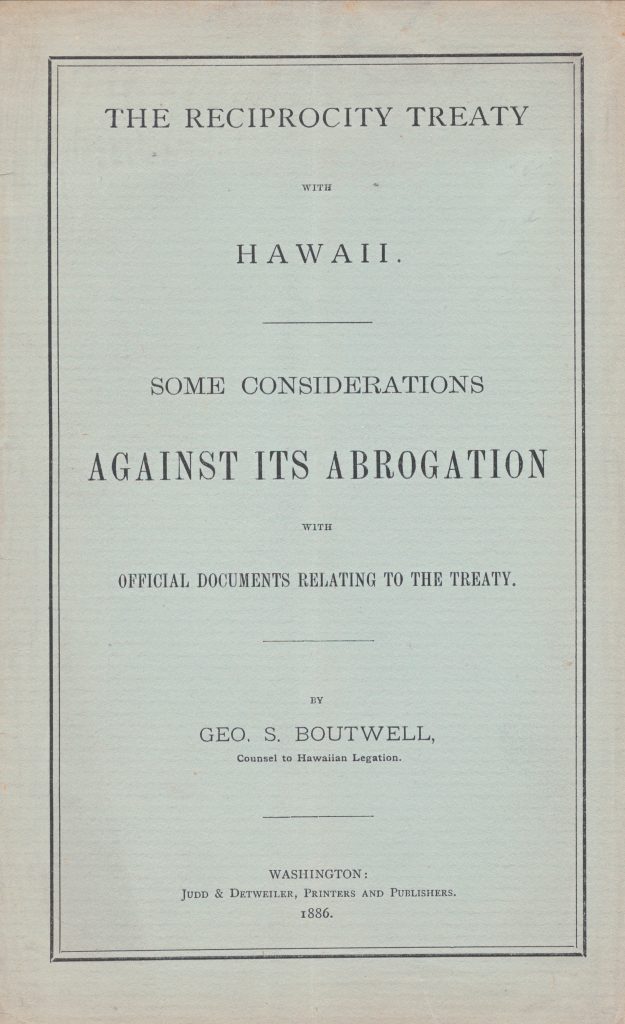Ka Lepupalika o Hawaiʻi (The Republic of Hawaii) lasted from July 4, 1894, to August 12, 1898. This one-party state was controlled by a small group of men, mostly Hawaiʻi-born descendants of American settlers. The men maintained financial, political, and family ties to the United States. Supporters and opponents published documents about the Republic and annexation as well as the prior overthrow, provisional government, and treaties with the United States.
The Lyman Museum preserves a small group of published materials related to the governments that followed the Hawaiian Kingdom. To learn more, the Archives is open for research by appointment: https://lymanmuseum.org/archives/.
Note: Hawaiian diacritical marks comprise just two symbols: the ʻokina (glottal stop) and the kahakō (macron). We use them with Hawaiian place names, but do not add them to proper names if a family or a company does not use them.







